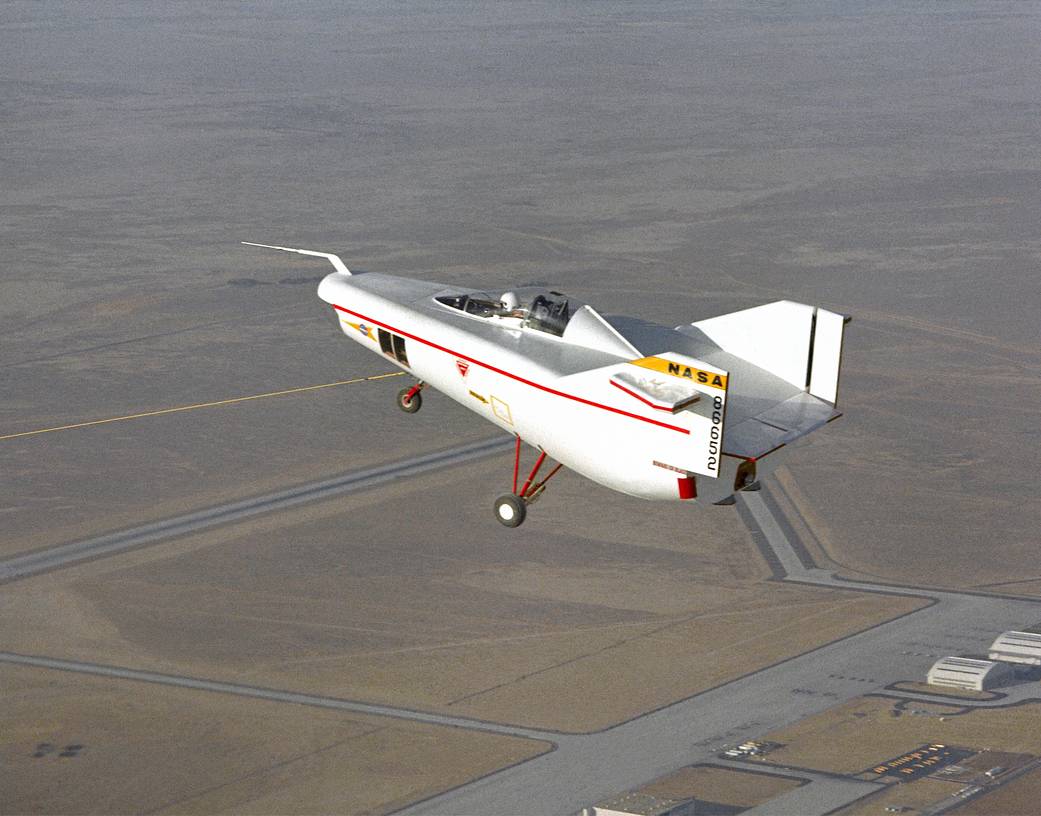In 1962, FRC Director Paul Bikle approved a program to build a lightweight, unpowered lifting body as a prototype to flight test the wingless concept. It would look like a “flying bathtub,” and was designated the M2-F1. Built by sailplane designer Gus Briegleb, it featured a plywood shell placed over a tubular steel frame crafted at the FRC. Construction was completed in 1963.
The first flight tests saw the M2-F1 towed aloft by a hopped-up Pontiac convertible driven at speeds up to 120 mph across Rogers Dry Lake. These initial tests produced enough flight data about the M2-F1 to proceed with flights behind a NASA R4D tow plane at greater altitudes. The R4D (the Navy designation of the C-47 or civil DC-3) towed the craft to an altitude of 12,000 ft. where it was released to fly freely back to Rogers Dry Lake. NASA research pilot Milt Thompson flew the M2-F1 during the first series of tests.
Typical glide flights with the M2-F1 lasted several minutes at speeds of 110 to 120 mph.
More than 400 ground tows and 77 aircraft tow flights were carried out with the M2-F1 before it was retired. A historical artifact now owned by the Smithsonian’s National Air and Space Museum, the M2-F1 is on long-term loan to NASA Dryden and has been restored to flight-like condition…Learn more
The M2-F1 was transferred to Air Force Flight Test Museum at Edwards California on January 23, 2015.




























